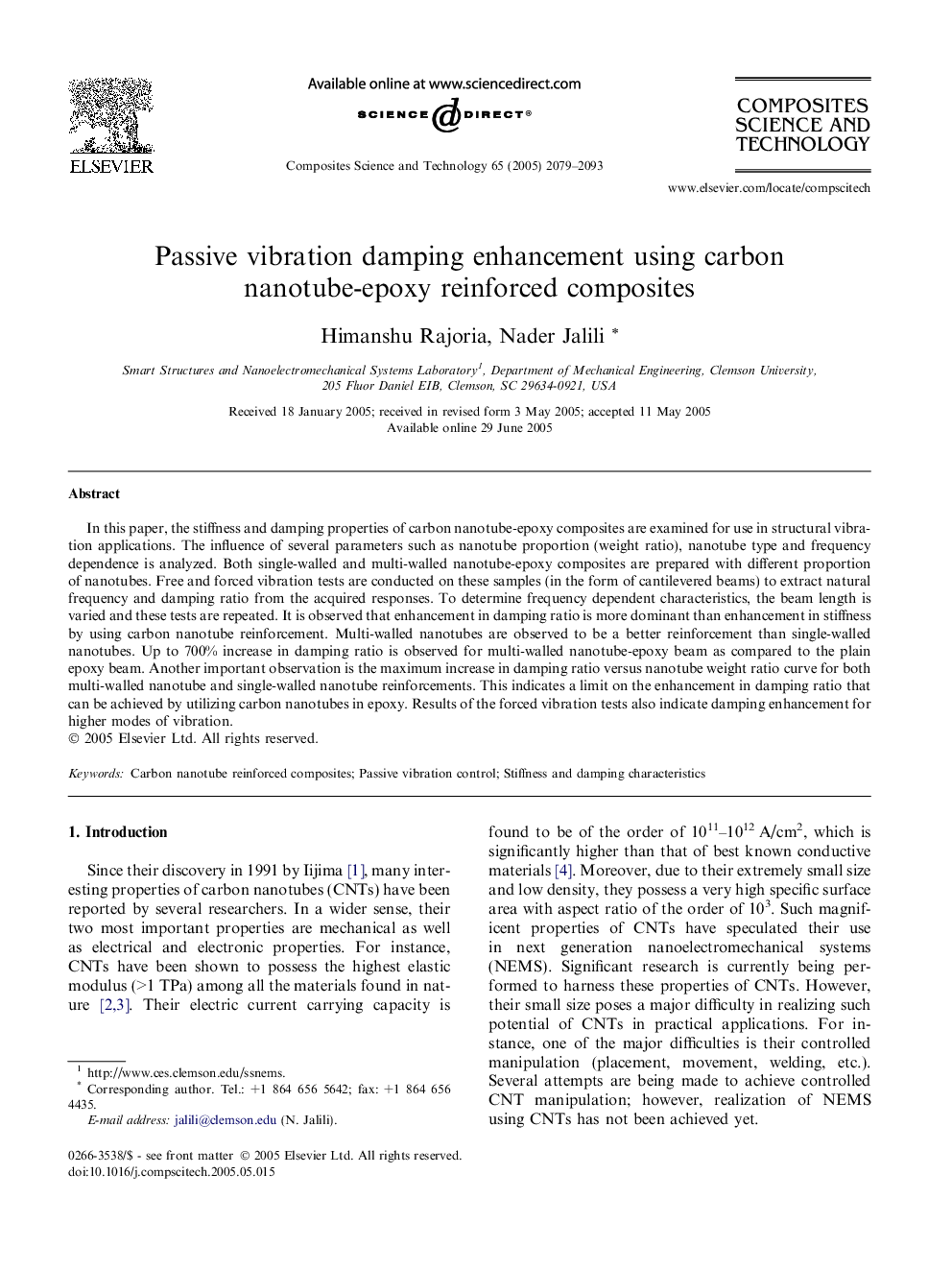| Article ID | Journal | Published Year | Pages | File Type |
|---|---|---|---|---|
| 822888 | Composites Science and Technology | 2005 | 15 Pages |
In this paper, the stiffness and damping properties of carbon nanotube-epoxy composites are examined for use in structural vibration applications. The influence of several parameters such as nanotube proportion (weight ratio), nanotube type and frequency dependence is analyzed. Both single-walled and multi-walled nanotube-epoxy composites are prepared with different proportion of nanotubes. Free and forced vibration tests are conducted on these samples (in the form of cantilevered beams) to extract natural frequency and damping ratio from the acquired responses. To determine frequency dependent characteristics, the beam length is varied and these tests are repeated. It is observed that enhancement in damping ratio is more dominant than enhancement in stiffness by using carbon nanotube reinforcement. Multi-walled nanotubes are observed to be a better reinforcement than single-walled nanotubes. Up to 700% increase in damping ratio is observed for multi-walled nanotube-epoxy beam as compared to the plain epoxy beam. Another important observation is the maximum increase in damping ratio versus nanotube weight ratio curve for both multi-walled nanotube and single-walled nanotube reinforcements. This indicates a limit on the enhancement in damping ratio that can be achieved by utilizing carbon nanotubes in epoxy. Results of the forced vibration tests also indicate damping enhancement for higher modes of vibration.
